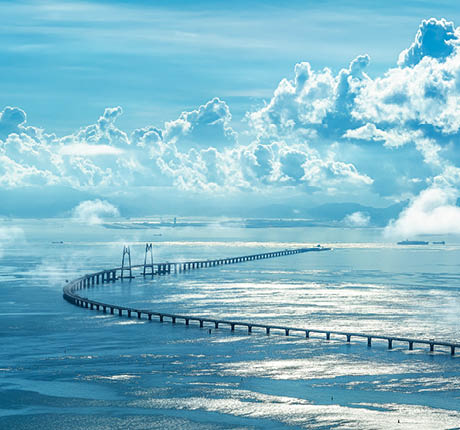From anchoring to GPS disruption, maritime infrastructure needs constant monitoring and actionable intelligence.
Authorities and operators responsible for maritime infrastructure face growing challenges, from vessel interference and fishing activity to navigation anomalies and environmental risks. Subsea cables, pipelines, offshore rigs and wind farms all require more than passive surveillance.
Gatehouse Maritime delivers real-time monitoring and automated alerts tailored to maritime infrastructure protection. Our platform combines AIS data, geo-fencing and pattern detection to help you detect threats early, respond quickly, and meet compliance demands with confidence. Protect your assets, strengthen situational awareness, and ensure operational resilience across national waters and critical infrastructure zones.
Critical Infrastructure Below the Surface
Subsea cables and pipelines carry global communications and energy across oceans, while offshore wind farms and platforms power millions of homes. Together, they form a vital layer of maritime infrastructure, but one that remains vulnerable to anchoring, trawling, unauthorized activity and environmental hazards.
A single incident can cause major disruptions, safety risks or financial loss and recovering the facts afterward is rarely simple.
For over 25 years, Gatehouse Maritime has supported authorities and operators in protecting this infrastructure. Our technology enables real-time detection, automated alerting and trusted documentation — helping you reduce risk, maintain service continuity and comply with regulatory requirements.
Protection of critical maritime infrastructure in all phases
Proactive Maritime Risk Assessment
Before deploying subsea cables, wind farms or offshore platforms, planners need to understand vessel traffic patterns and historical activity in the area. Our platform provides access to detailed AIS data and analytics, helping you identify high-risk zones and avoid unnecessary exposure to damage.
By analysing historical traffic, anchoring behaviour and fishing activity, you can build data-driven risk assessment reports supporting smarter siting decisions and regulatory processes.
Real-Time Protection of Sensitive Areas
Once infrastructure is in place, real-time monitoring is key. Our solution uses geo-fencing and pattern detection to identify vessels that pose a genuine threat, for instance trawling or anchoring in restricted zones, and filters out irrelevant traffic.
Alerts are triggered only when specific risk behaviours occur, giving you actionable insight without unnecessary noise. This enables faster response and reduces the likelihood of damage.
Respond, Document, and Prevent Future Damage
If a vessel damages an unprotected asset, accurate incident reconstruction is essential. Our system logs and visualizes vessel movements to support investigations, claims or legal action.
As a preventive step, we also support the deployment of Aids to Navigation (AtoNs), digital markers shown on navigation systems to warn other vessels and reinforce protection zones where physical barriers are not feasible.
Insights on maritime infrastructure protection
Let’s get in touch

Jacob Brosbøl Sørensen
Commercial Director
Do you want do know more about our solutions? Or to see a demonstration?
I’ll answer any questions you might have and show you how our solutions can benefit your operations.

